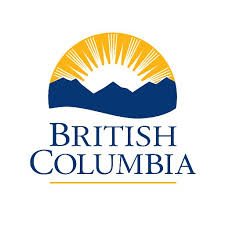land use
Type of resources
Available actions
Topics
Keywords
Contact for the resource
Provided by
Years
Formats
Representation types
Update frequencies
status
Service types
Scale
Resolution
-
Service for making available INSPIRE themes
-
Corine Land Cover (CLC) 2012 and CLC change 2006-2012 are two of the datasets produced within the frame of the Initial Operations of the Copernicus programme (the European Earth monitoring programme previously known as GMES) on land monitoring. Corine Land Cover (CLC) provides consistent information on land cover and land cover changes across Europe. This inventory was initiated in 1985 (reference year 1990) and established a time series of land cover information with updates in 2000 and 2006 being the last one the 2012 reference year. CLC products are based on photointerpretation of satellite images by national teams of participating countries - the EEA member and cooperating countries - following a standard methodology and nomenclature with the following base parameters: 44 classes in the hierarchical three level Corine nomenclature; minimum mapping unit (MMU) for status layers is 25 hectares; minimum width of linear elements is 100 metres; minimum mapping unit (MMU) for Land Cover Changes (LCC) for the change layers is 5 hectares. The resulting national land cover inventories are further integrated into a seamless land cover map of Europe. Land cover and land use (LCLU) information is important not only for land change research, but also more broadly for the monitoring of environmental change, policy support, the creation of environmental indicators and reporting. CLC datasets provide important datasets supporting the implementation of key priority areas of the Environment Action Programmes of the European Union as protecting ecosystems, halting the loss of biological diversity, tracking the impacts of climate change, assessing developments in agriculture and implementing the EU Water Framework Directive, among others. More about the Corine Land Cover (CLC) and Copernicus land monitoring data in general can be found at http://land.copernicus.eu .
-

**NOTE: Not for operational use. This dataset is the result of an analysis (Aug 2018) of many input layers and as such the accuracy, currency, and completeness of the dataset cannot be relied upon for operational or management decision making.** Land designations that contribute to conservation are spatially-defined areas established through legislation or purchased for the protection of nature and cultural values, the conservation of biological diversity and ecosystem services and the management of natural resources. Over 40 land designations were divided into three broad categories: - **Protected Lands** includes all Parks & Protected Areas and Other Protected Lands with the primary purpose of the long-term conservation of nature and cultural values. - **Resource Exclusion Areas** includes all designations that fully exclude one or two resource activities for the purpose of conservation. - **Spatially Managed Areas** includes all spatial designations managing or limiting development or a resource activity for the purpose of conservation, or a spatial management regime in place to preserve specified elements of biodiversity but where activity is still allowed to occur. Land designations layers were combined into a single layer, with overlaps removed such that areas with overlapping designations were assigned to the highest conservation contribution category. **Data sources:** A list of the source datasets, including links to their sources, more information, and data processing steps is available [**here**](https://raw.githubusercontent.com/bcgov/designatedlands/v0.1.0/sources.csv). Details on methods are available [**here**](https://github.com/bcgov/designatedlands). Previous versions of the data are available [**here**](https://github.com/bcgov/designatedlands/releases).
-

The Copernicus High Resolution Forest Layer Tree Cover Change Mask (TCCM) 2015-2018 raster product provides information on the change between the reference years 2015 and 2018 and consists of 4 thematic classes (unchanged areas with no tree cover / new tree cover / loss of tree cover / unchanged areas with tree cover) at 20m spatial resolution and covers EEA38 area and the United Kingdom. The production of the High Resolution Forest layers was coordinated by the European Environment Agency (EEA) in the frame of the EU Copernicus programme. The High Resolution Forest product consists of three types of (status) products and additional change products. The status products are available for the 2012, 2015 and 2018 reference years: 1. Tree cover density providing level of tree cover density in a range from 0-100%; 2. Dominant leaf type providing information on the dominant leaf type: broadleaved or coniferous; 3. A Forest type product. The forest type product allows to get as close as possible to the FAO forest definition. In its original (20m) resolution it consists of two products: 1) a dominant leaf type product that has a MMU of 0.5 ha, as well as a 10% tree cover density threshold applied, and 2) a support layer that maps, based on the dominant leaf type product, trees under agricultural use and in urban context (derived from CLC and high resolution imperviousness 2009 data). For the final 100m product trees under agricultural use and urban context from the support layer are removed.
-

Ontario Land Cover (OLC) is a primary data layer. It provides a comprehensive, standardized, landscape level inventory of Ontario’s natural, rural and anthropogenic (human made) features.
-

The High Resolution Layer Ploughing indicator (PLOUGH) raster product continues the 2015 and 2018 PLOUGH Layer following a rolling archive principle by adding current information and removing historic years. It indicates the number of years since the last indication of ploughing within the permanent grassland area. PLOUGH is derived by taking into account the series of binary HER layers, the BVL classifications and HR VPP PPI (Plant Phenology Index) quantiles. BVL classes 4 (crop) and 7 (overlaying layer between herbaceous and crop) indicate a ploughing event. Low HR VPP PPI quantiles indicate low vegetation at a certain time of the year. For years with missing information (2016 and earlier) the ploughing information from the historic PLOUGH product is considered which causes some issues. This dataset is provided annually starting in 2017 with 10 meter rasters (fully conformant with the EEA reference grid) in 100 x 100 km tiles covering the EEA38 countries. High Resolution Layer Grasslands product is part of the European Union’s Copernicus Land Monitoring Service. This dataset includes data from the French Overseas Territories (DOMs)
-

For most recent Ecological Land Classification data, see: https://data.novascotia.ca/d/q6zd-39t3 The Ecological Land Classification (ELC) for Nova Scotia provides a hierarchical mapping of the province's forest ecosystems into ecosections, ecodistricts and ecoregions. It includes interpretation of the dominant natural disturbance regimes and potential climax forests at the ecosection level.
-

Non-Forest cover polygons interpreted from aerial imagery on a 10 year cycle for the province of New Brunswick. The attributes contain information that describes the non-forest characteristics for that polygon area including agriculture, settlement, utility corridors, etc.
-

The High Resolution Layer Forest Additional Support Layer (FADSL) provides information on trees under agricultural use or in urban context to be excluded from the Forest Type (FTY) product and at 10m spatial resolution. The derivation of Forest Additional Support Layer (FADSL) is based on the spatial intersection of the 10m DLT and TCD layers with CORINE Land Cover (CLC) 2018 and HRL Imperviousness Degree 2018 with 10 m spatial resolution; TCD range of ≥ 10-100%; with a MMW of 10m and no MMU (pixel base). This dataset is provided on a 3-yearly frequency in 10 meter rasters (fully conformant with the EEA reference grid) in 100 x 100 km tiles covering the EEA38 countries. High Resolution Layer Tree Cover and Forest product is part of the European Union’s Copernicus Land Monitoring Service. This dataset includes data from the French Overseas Territories (DOMs)
-

The Ecological Land Classification (ELC version 2015) for Nova Scotia provides a hierarchical mapping of the province's forest ecosystems into ecosections, ecodistricts and ecoregions. It includes interpretation of the dominant natural disturbance regimes and potential climax forests at the ecosection level.
 Arctic SDI catalogue
Arctic SDI catalogue